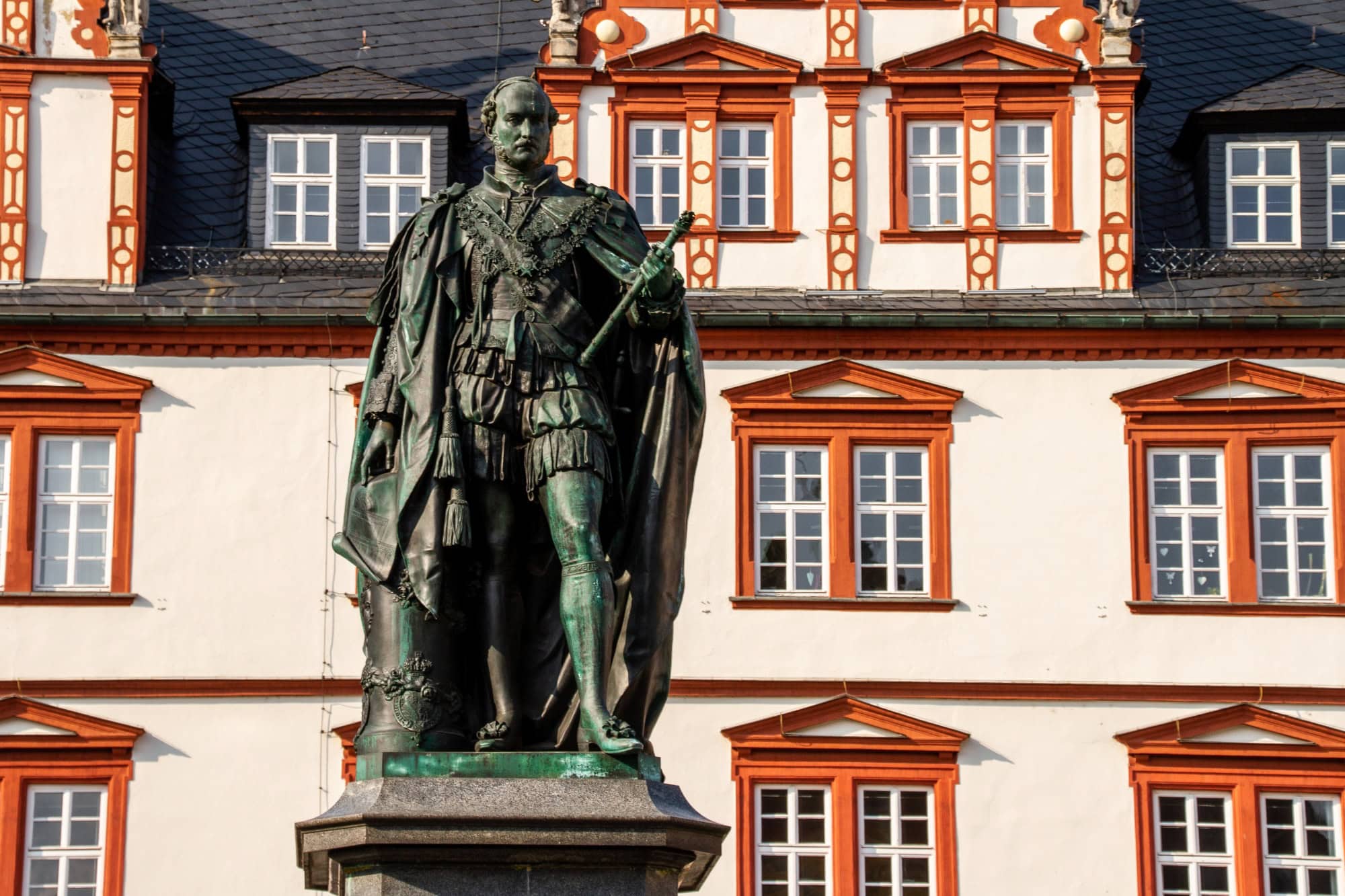Coburg is a true Franconian beauty. The idyllic former residence city is worth a visit in both summer and winter, not least because of the delicious Coburg bratwurst. But one son of the city in particular caught the attention of funky editor Konrad: Prince Albert of Coburg.
From Coburg to Westminster
It’s always amazing who you meet when traveling. During my weekend trip to Coburg, I suddenly found myself face to face with His Royal Highness Prince Albert of Saxe-Coburg and Gotha, Duke of Saxony. Well, at least as a statue in the market square; the real one died in 1861 at Windsor Castle. A quick glance at the map reveals that this is not in Upper Franconia at all! But how did my silent weekend acquaintance end up there?

The answer lies somewhere between “love at first sight” and “19th-century European alliances” – in any case, it’s a fascinating story. In 1840, Albert married none other than the then newly crowned Queen Victoria of England. Incidentally, she set a trend with her white wedding dress that continues to this day. And even though the marriage was arranged according to the customs of the time, the two are said to have fallen head over heels in love with each other quite soon after. However, the British enthusiasm for the German prince from the provinces was initially limited. Some even doubted his noble ancestry. Through his social commitment—Albert encouraged the construction of workers’ housing, for example—he gradually won the hearts of the islanders. The prince was also instrumental in the design of London’s Crystal Palace, where the first World’s Fair was held in 1851.
Immortalized for Posterity
But after 22 years, Albert died of a chronic stomach ailment at the age of just 42. “My life as a happy person is over,” the queen wrote to her uncle Leopold. And from then on wore only black as a sign of mourning. This also set a trend in the fashion world of the time, and soon it was difficult to find black fabric in the kingdom.
In his hometown of Coburg, the prince consort is still commemorated and honored today. This is evidenced not only by the Prince Albert statue in the market square. Not far from there is Albertsplatz, where the people of Coburg originally wanted to erect the statue. However, as this was where the weekly pig market was held, the queen intervened. She did not want to subject her dead husband to this, and so the copper Albert was placed on the market square.

The royal couple immortalized themselves in the royal seat in yet another way. For his wife’s visit to his hometown, Prince Albert had a flush toilet imported from England and installed in Ehrenburg Castle. It is one of, if not the first, flush toilets in what is now Germany. And it can still be visited today. In retrospect, this was perhaps Albert’s most lasting achievement.
Planning a Visit?
The history of the House of Saxe-Coburg can be explored in Coburg and the surrounding area. In the former royal seat, a visit to Ehrenburg Castle and Veste Coburg is recommended. In nearby Rödental, Rosenau Castle was often used as a retreat by the ducal family and the English royal couple. All of these places are now open to the public and used as museums. More information on the tourism website of the city of Coburg.





